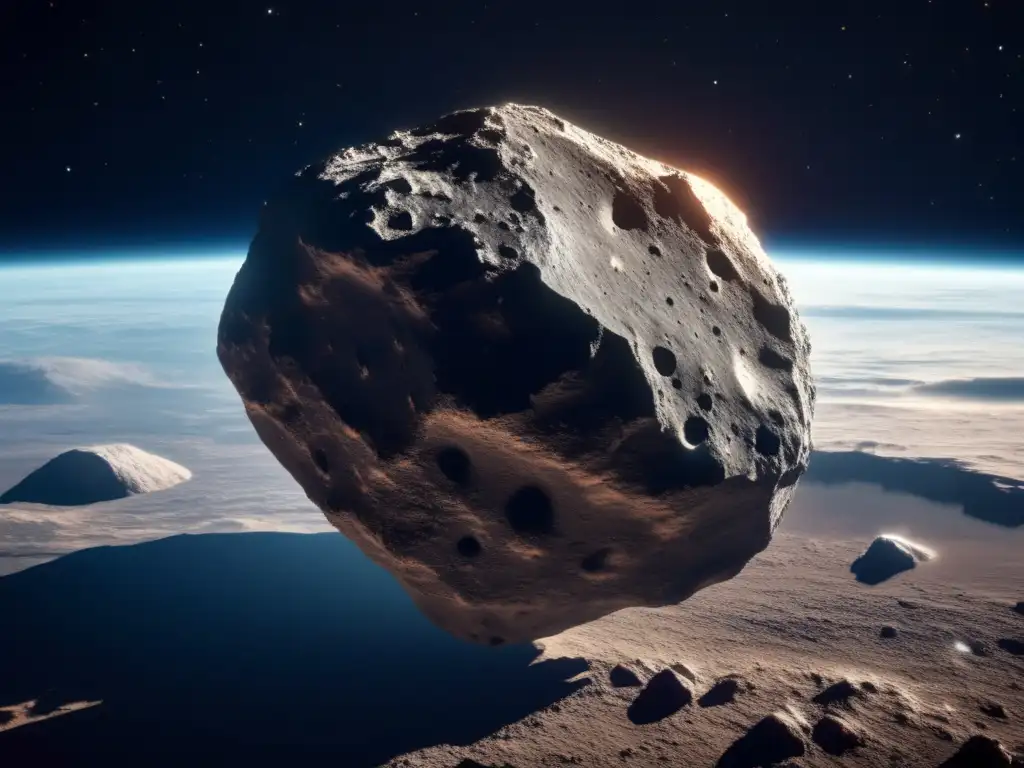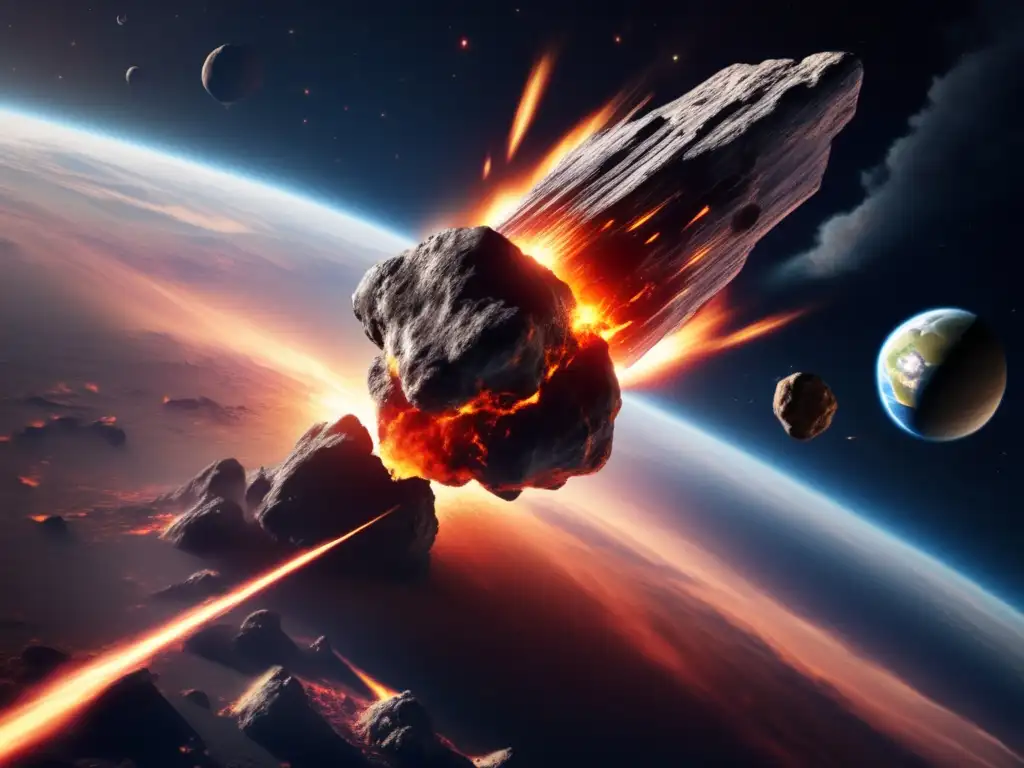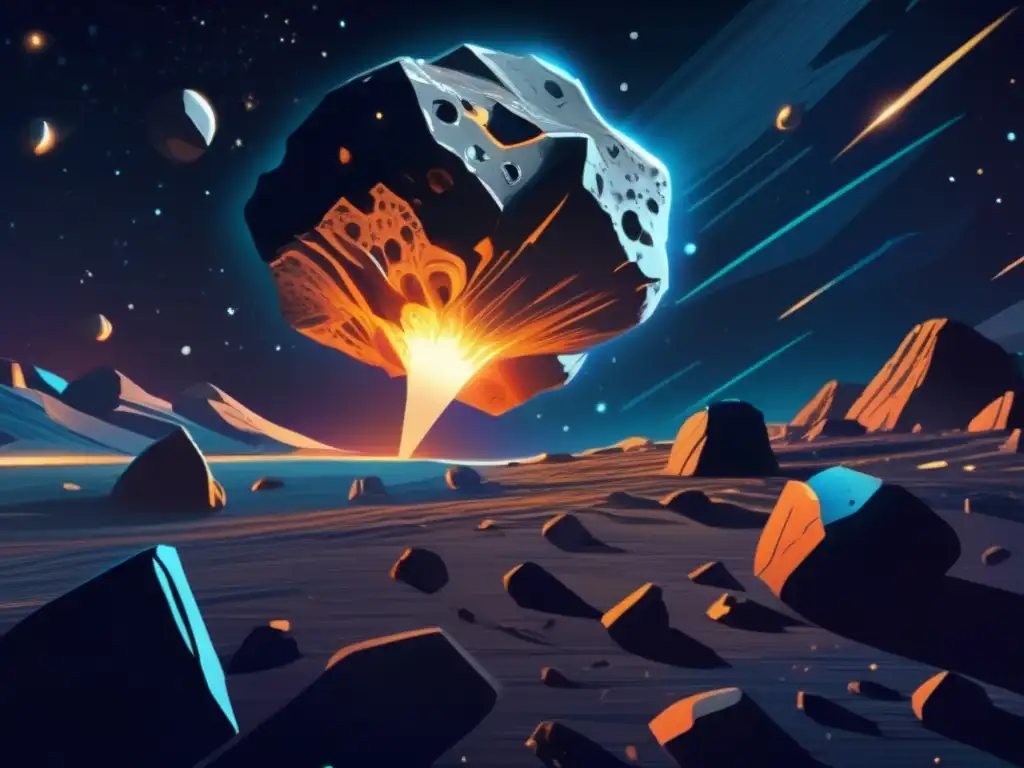Journey To Impact: The Path Of An Asteroid Towards Earth

Introduction
Asteroids are small, rocky bodies that orbit the Sun. They can range in size from a few meters to hundreds of kilometers. Although most asteroids remain safely in the asteroid belt between Mars and Jupiter, some travel on a trajectory that brings them closer to Earth. When an asteroid collides with Earth, it can cause catastrophic damage, as evidenced by the extinction of the dinosaurs 65 million years ago.
The Path of an Asteroid

Orbit and Trajectory
Asteroids usually orbit the Sun in the asteroid belt between Mars and Jupiter. However, some asteroids are thrown out of the asteroid belt due to gravitational interactions with other objects, such as planets. These asteroids often have highly elliptical orbits that bring them close to the inner solar system, including Earth. The path of an asteroid is influenced by various factors, including gravity, solar wind, and the presence of other celestial bodies. Scientists use computer models to predict the future path of potentially hazardous asteroids.
Near-Earth Objects
Asteroids that come within 1.3 astronomical units (AU) of the Sun and hence are likely to cross Earth's orbit are called Near-Earth Objects (NEOs). Many NEOs are harmless and pass by Earth at a safe distance, but some pose a threat of impact. NEOs are further divided into three categories based on their potential risk of impact: Aten, Apollo, and Amor.
Surviving the Journey
The journey from the asteroid belt to Earth can be dangerous for asteroids as they encounter different celestial bodies and forces. As asteroids approach Earth, they must survive the heat and pressure of entry into Earth's atmosphere. Most small asteroids burn up in the atmosphere, but larger asteroids can survive and strike the Earth's surface. The impact of an asteroid on Earth can cause significant damage, including tsunamis, earthquakes, and fires.
The Effects of Asteroid Impacts

Impact Craters
When an asteroid collides with Earth, it creates a crater that can range from a few meters to hundreds of kilometers in diameter, depending on the size of the asteroid. The impact also causes shock waves that can trigger earthquakes and volcanic eruptions. Over time, the crater may fill with water and become a lake, or it may erode away entirely.
Global Effects
Asteroid impacts can have global effects that last for years. The dust and debris thrown up by the impact can block out sunlight and cause a global cooling effect that can last for months or even years. The impact can also trigger wildfires that release large amounts of smoke and carbon dioxide into the atmosphere, leading to further cooling. The sudden release of energy from the impact can also trigger earthquakes and volcanic eruptions.
Mass Extinctions
The most dramatic effect of an asteroid impact is mass extinction. The impact that killed the dinosaurs 65 million years ago is thought to have caused the extinction of more than 75% of all plant and animal species on Earth. The impact caused massive fires, global cooling, and a catastrophic loss of habitat for many species. Recovery from such an event can take millions of years.
Frequently Asked Questions

-
How often do asteroids impact Earth?
Asteroids large enough to cause significant damage to Earth impact approximately once every few million years.
-
What is being done to detect and prevent potentially hazardous asteroids?
Scientists around the world are actively searching for potentially hazardous asteroids and developing strategies to deflect them if they pose a threat of impact.
-
Can we predict when an asteroid will impact Earth?
Scientists can predict the future path of asteroids using computer models, but it is difficult to determine with certainty whether an asteroid will strike Earth until it is very close.
-
What is the likelihood of a catastrophic asteroid impact in the near future?
The likelihood of a catastrophic asteroid impact in the near future is low, but the potential consequences are significant enough that continued monitoring and preparation are warranted.
-
Can we mine asteroids for resources?
Yes, there is growing interest in mining asteroids for their valuable resources, including water, metals, and minerals.
Conclusion
Asteroid impacts have had a profound effect on Earth's history, and the potential risk of future impacts is a matter of global concern. Although the likelihood of a catastrophic asteroid impact in the near future is low, continued monitoring and preparation are essential. By studying the path of asteroids towards Earth, we can better understand their behavior and develop strategies to mitigate the risk of impact. Thank you for reading this article, and please share your thoughts and feedback in the comments section below.
Additional Resources

For more information about asteroids and their impact on Earth, please visit these websites:
 Stardust And Stone: Asteroid Composition And Its Impact Consequences
Stardust And Stone: Asteroid Composition And Its Impact Consequences Chasing Shadows: The Search For Undiscovered Impact Craters
Chasing Shadows: The Search For Undiscovered Impact Craters Nature's Own Bombs: Asteroids And Their Explosive Impacts
Nature's Own Bombs: Asteroids And Their Explosive ImpactsIf you want to discover more articles similar to Journey To Impact: The Path Of An Asteroid Towards Earth, you can visit the Asteroid Impacts category.
Leave a Reply

Articulos relacionados: